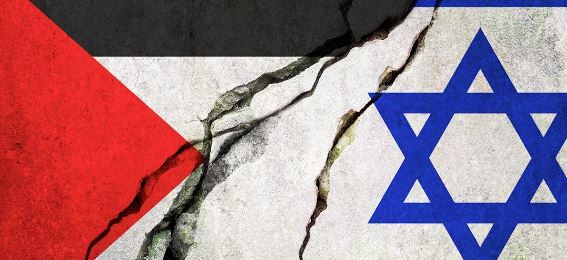The Half-Measure of Human-Grounded AI Ethics. Within the context outlined thus far, as argued by Coeckelbergh and Sætra, the debate carried on by LLMs ongoing development seems to be between two main point of view: the Marxist concept of “technological determinism” and the “technological instrumentalism” or “technical orthodoxy”.
Continue readingTag Archives: Security
SPOTREP. The Los Angeles wildfires: an alternative perspective – Emilio Palmieri
Huge fires have been devastating Los Angeles for days. The damage is enormous. What do we know? What don’t we know? What to think?
Continue readingFrom Data to Division 4 of 5: Artificial intelligence – by Daniele M. Barone
Mimicking a Moral Course for LLMs. The first way to stem LLMs from a conversation driving to inappropriate content are the so-called “guardrail messages,” as “I’m sorry, I cannot generate inappropriate or offensive content” or “As a large language model, I cannot … ”.
Continue readingFrom Data to Division 3 of 5: Artificial intelligence – by Daniele M. Barone
A Noisy Digital Environment as a Biased Dataset. As previously analyzed, human language in public and political debates impacts not only how individuals form opinions but also how AI systems, including LLMs, interact with users and further shape political discourse.
Continue readingMagdeburgo 2024 e il terrorismo multipolare: nessuna novità – by Barbara Lucini
L’attentato ai mercatini di Natale di Magdeburgo di qualche giorno fa non introduce grandi novità nell’ambito della definizione di un nuovo tipo di terrorismo e innovative forme di estremismo.
Continue readingFrom Data to Division 2 of 5: Artificial intelligence – by Daniele M. Barone
The Human Touch in LLMs.
As previously analyzed, LLMs represent a significant step toward human-like AI interaction. While they lack true understanding, they learn to associate words and interpret meaning through data analysis.
Continue readingSgominata cellula di al-Aqsa in Abruzzo, Israele chiede estradizione del leader – by Giovanni Giacalone
Gli arresti dei tre palestinesi a L’Aquila, membri dell’unità “Tulkarem-Risposta Rapida” delle Brigate al-Aqsa risvegliano l’attivismo del terrorismo palestinese legato all’organizzazione al-Fatah, quando tutti gli occhi erano puntati su Hamas in seguito all’eccidio perpetrato dall’organizzazione terrorista di stampo islamista lo scorso 7 ottobre nel sud d’Israele.
Continue readingWar and peace in the global village. Second half – by Giacomo Buoncompagni*
Shortly after the clashes in Ukraine, the apparently silent Israeli-Palestinian conflict reignited, at least in the Western media. A few months later, more blood, death and hostages between polarised information and a desperate plea for peace. Diversity has historically been a potential source of friction and misunderstanding.
Continue readingNuovi attacchi estremisti in Europa e strumenti di valutazione della minaccia: una riflessione critica sui TRA-Is – by Barbara Lucini
L’attentato estremista di lunedì 16 Ottobre a Bruxelles che vede la morte di due turisti svedesi ha riacceso l’attenzione sulla questione sicurezza e rischi attentati in Europa.
Continue readingPMC Wagner and Allied Mercenaries, Aftermath of the March by – Federico Borgonovo & Giulia Porrino
During the Russian-Ukrainian conflict, PMC Wagner exploited online and offline support of some military groups, including:
- Española, a parallel battalion of Russian ultras led by Alexander Shum and with a special training centre near San Petersburg.
- Rusich, a reconnaissance, sabotage and assault group, directly attached to the PMC Wagner.
- Serb members, active since the deployment in Syria. Those are linked with several ultras’ communities.
- Níðhöggr (Nidhogg), a little unit near to the Scandinavian right-wing militia funded by an actual Wagner member.
All these units were orbiting around the PMC Wagner as embedded support groups. Starting from their online propaganda we theorized a pro-Wagner alliance system (figure 1).
Continue readingEarthquake in Turkey: natural disasters from a security perspective – by Maria Alvanou
The recent earthquake in Turkey has created a wave of international sympathy, with people sending help from countries all over the world. Greece, a country whose relations with Turkey have been characterized by longstanding (and recently escalating) tension, was one of the first to send help and this may better the situation between the two countries[1]. At the same time inside Turkey, everyday people but also celebrities are showing solidarity[2]. Continue reading
PMC Wagner Propaganda Ecosystem – by Giulia Porrino & Federico Borgonovo
The Wagner propaganda ecosystem is fragmented and made up of different actors that we have categorized. We identified a “top-down” propaganda architecture, composed of different materials disseminated by the leadership of the Wagner company, exploiting traditional media such as television, movies, events, and newspaper. Examples of this are the construction of the Wagner Center in St. Petersburg and movies produced by Aurum Production owned by Prigozhin.
Continue reading











